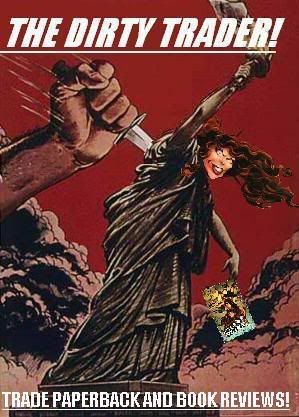
The O. T. Nelson novel The Girl Who Owned a City was first released in 1975, and I read it around 1987 for English class. I was a big book reader back then, but I had never embraced a novel like I did that one. I can't recall if I read it before or after seeing George A. Romero's Dawn of the Dead, but either way it was part of the genesis of a lifelong love of what the Japanese dubbed "survival horror." The premise is that a plague turns everyone over the age of twelve (or was it thirteen?) to dust, but seems to resolve itself after the deaths of its last victims. Regardless, it leaves a world full of children to struggle without supervision, education or utilities. The kids swiftly descend into scavengers and pillagers, barely subsisting on junk food. A particularly clever girl named Lisa Nelson recognizes the need for organization and leadership, especially with the increasingly aggressive advance of the Chidester Avenue Gang. Nelson slowly turns the frightened neighborhood children into the prototype of a new society, but not without complications or hard fought battles. I was completely immersed into the narrative as a kid, and I recall being so excited that I spontaneously woke up in the wee hours of one morning to finish reading it. I had to return my class copy, but bought one of my own around 1992. I loaned it to a pretty girl pretty much immediately after I got the thing at a book fair, and she never returned it. For years, I considered it my favorite book, but I haven't read it again in a quarter century.
After reading the comic book adaptation, I'm inclined to keep it that way. It works as an empowerment fantasy for kids, but it's hard to take it seriously as an adult. The author's objectivist agenda isn't really a problem, since the selfishness of that philosophy suits children, but they're just too damned good at rising to the challenge of assuming the mantle of early adulthood without guidance. Too much happens in too short a span of time with too much sophistication and too little emotional impact. Kids are basically guileless adults, and most grown-ups are stupid and lazy. It's hard to believe that one charismatic leader could whip a whole town into shape, and it's amusing how close to a communist ideal they come for a book ostensibly intended to be a young adult introduction to Ayn Rand.
Setting aside my issues with the source material, it makes for a problematic adaptation. It's tough enough to turn a 180 page book into a 126 page comic, before you realize that the essence of the book is meetings about city planning. Characters talk and talk and talk, and when they actually do something, it basically comes down to shopping at a warehouse and home improvement tasks. Pages 33-35 form a dramatic beat, and then a series of dangerous encounters are discussed in a two page montage in the mid-60s. That leads into about twenty pages of modest action and melodrama, followed by a lengthy stretch of planning. There's a final anticlimatic encounter running maybe a dozen pages, and then it's over. I remember enough of the book to know that the showier moments got the blood pumping, but the affect is considerably muted in comic form by the clearer picture of minimalist violence and the tone of the artwork. The book could fool the reader into believing characters were imperiled, but the comic can't pull off the same trick, so that you're left waiting for Spider-Man to lift the heavy machinery and rescue Aunt May.
I don't blame the creators of the adaptation for its limitations. Scripter Dan Jolley compresses the material well. However, it sometimes feels like a later draft of a heavily revised screenplay with lots of unresolved vestigial elements. A major character disappears after page 95, and there's a lengthy sequence from the book involving Lisa Nelson attempting to recruit mercenaries that feels extremely extraneous in the comic. Jolley suffers the common pitfall of trying to hit too many popular story points without letting each one have enough room to breathe, making the reader conscious of this being a narrative told in shorthand. Joëlle Jones' art style is accessible and well suited to the material. I would say that it is the main draw of the graphic novel, but as mentioned, its sweetness also removes a lot of the tension of the book. Lisa Nelson is distinctive and heroic, but also seems visibly as mature as originally written, which is to say she's ten-going-on-seventeen. Her handling of main antagonist Tom Logan also strains credibility, as his disfigurement is closer to Harvey Dent in The Dark Knight than anything approaching reality.
At $9.95, there are worse ways to spend your money than by picking up this comic, but I don't think it will necessarily hook the Hunger Games crowd on its own merits. As usual, the original book is probably the better investment. Still, if you just want a brisk all ages post-apocalyptic read with cute art, this is a way to go. I'd also be interested to see if it opens the door for an adaptation of O. T. Nelson's sequel, which was rejected by the publisher and has yet to see print. Given that ringing endorsement, a ten buck illustrated Cliff's Notes might be the perfect avenue for presentation.



















